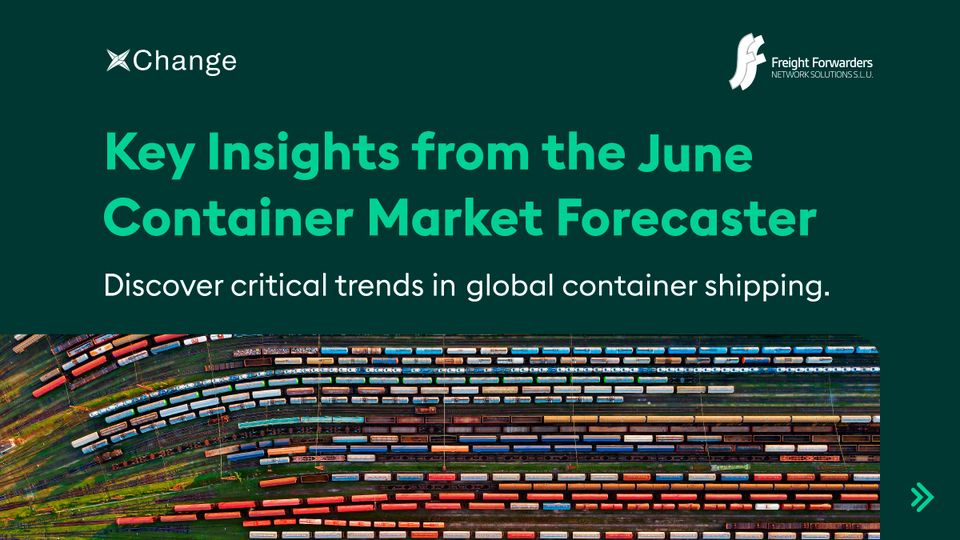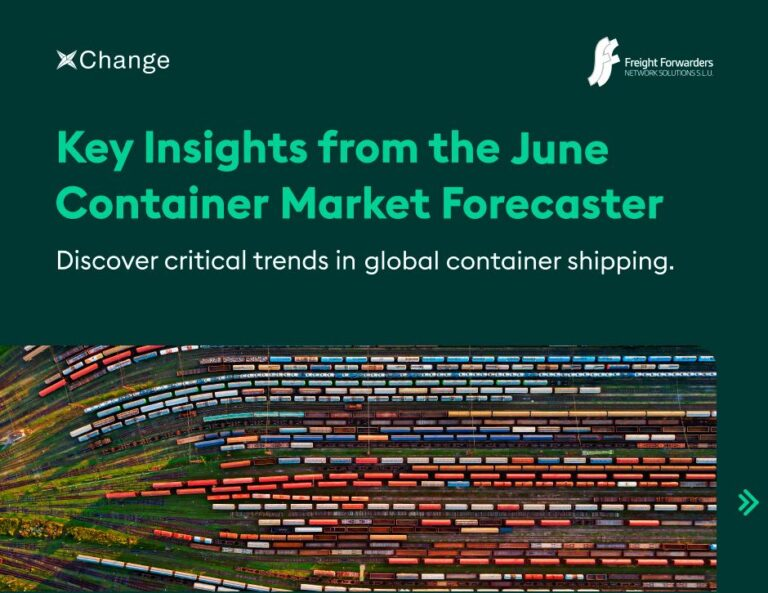Container shipping rates are spiking once again. For the first time since the pandemic era, ocean freight rates are nearing record highs. This surge in rates is attributed to limited container supply due to rerouting around the Red Sea, and strong demand in multiple regions. The busy season has commenced earlier than usual, driving rates on major east-west routes to their highest levels since September 2022. This is having a major impact on nearly all shipping routes, including those to Latin America, Africa, and within Asia.
In today’s blog we are going to talk about the trends and insights that are shaping the global container shipping industry in June as forecasted by Container xChange the largest container marketplace in the industry and digital partner of Globalia Logistics Network.

The price hike in the container shipping industry
Carriers have increased the number of vessels operating on East-West routes to compensate for longer distances now taken to avoid the Red Sea. However, this has only resulted in a 2% increase in monthly effective capacity, according to Drewry. This limited growth is due to ships covering longer distances and reduced productivity. Drewry anticipates that additional capacity set for delivery in 2024 will genuinely expand effective capacity, rather than merely offsetting the need for more ships due to Red Sea diversions.
Demand for container shipping remains robust and this strong demand is echoed across various shipping routes. This is yet another cause of the rising prices. Moreover, a survey of Drewry Benchmarking Club members indicates that many international shippers are sending peak season inventory early to ensure timely arrivals, which is driving rates up due to stressed capacity and infrastructure.
Operational disruptions are also a significant issue. Port productivity has declined, with ships waiting 43% longer to berth at high-volume ports between 3Q23 and 2Q24. Major transshipment ports in Asia are nearing record container density levels, further constraining supply. Drewry identifies that the peak season’s end, the delivery of new ships, and the reopening of the Suez Canal route could alleviate current supply-demand problems.
Insights from Container xChange about the recent surge in prices
Container xChange’s forecaster highlights the dramatic rise in container prices in China recently, which surged by 45% in May. Meanwhile, container prices have remained relatively stable in the US and Europe.
Christian Roeloffs, co-founder and CEO of Container xChange, provided insights into the current market dynamics, stating, “Shippers are pulling shipment dates forward, resulting in a temporary demand for shipping capacity. This is reflected in higher throughput volumes, despite underlying consumer demand and factory orders being weak.”
Several key economic indicators from the US highlight this trend:
- Consumer spending increased by only 2% in the first quarter of 2024, below the advance estimate of 2.5% and marking the lowest increase in three quarters.
- Retail inventories excluding autos increased by only 0.3% month-over-month in April 2024, following a 0.4% decline in March 2024, indicating cautious restocking by retailers.
- New orders for manufactured goods in April rose by $4.3 billion, a 0.7% increase to $588.2 billion, while shipments increased by $5.9 billion or 1% to $590.2 billion, signaling robust demand in the shipping and container logistics market.
Short-term Price Bubble
The current spike in container prices appears unsustainable in the long term due to the lack of strong underlying demand. Concerns over labor markets and high-interest rates suggest that consumers are likely to reduce spending, potentially leading to a decline in demand for goods and a subsequent reduction in shipping volumes. Unless there is a stronger demand revival and increased supply capacity absorption, the market is poised for a correction.
Market Outlook
Christian Roeloffs shared his expectations for the market, “Given these factors, we expect that the elevated container prices we’ve seen in recent months may not be sustainable. As the initial rush to restock inventories subsides and the real demand from consumers and businesses remains flat, we anticipate a stabilization or even a decline in container prices in the mid-term. The market is showing signs of volatility driven by short-term factors, rather than a sustained increase in demand.”
Macro-Economic Indicators and Consumer Confidence
The underlying macroeconomic indicators suggest a more tempered outlook for the coming months. Consumer spending growth remains sluggish, and retail inventories are only modestly increasing. Additionally, subdued consumer sentiment reflects ongoing concerns about labor markets and inflation, which are likely to dampen consumer demand further.
As we move into the second half of 2024, it is crucial for stakeholders in the container shipping market to monitor these economic indicators closely. The expected stabilization or decline in container prices will likely impact shipping strategies, inventory management, and overall logistics planning. Adapting to these market dynamics will be essential for maintaining efficiency and competitiveness in the evolving global ocean freight landscape.


